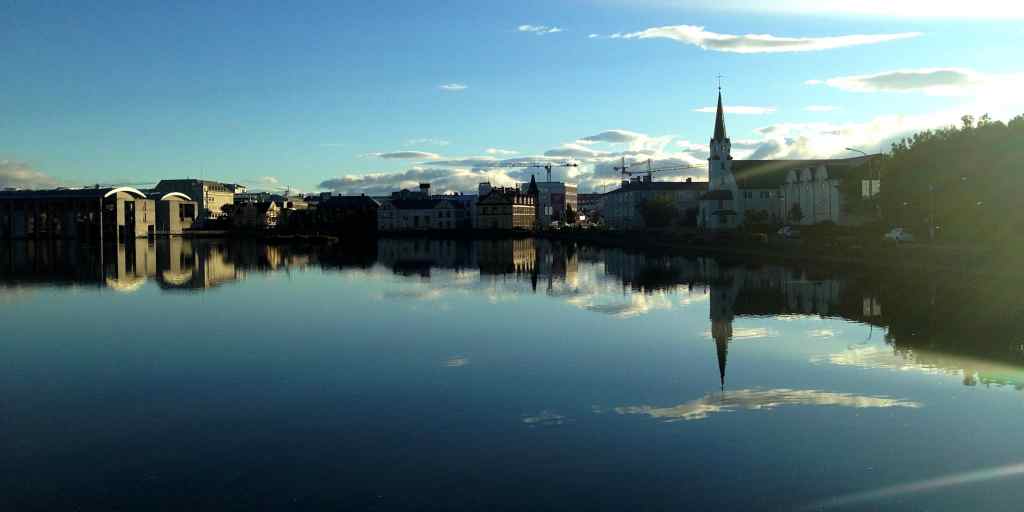My years in Madrid have been consumed with the search to find the cheapest possible flights. Within Europe, this is fairly easy, as bargain airlines could bring you from Madrid to Krakow for less than forty euros. But it is more difficult to find similar deals for trans-atlantic flights (which I need to get back to New York). For a few years, the best deals I was able to find were with Icelandair, which allowed me to travel for around $500 with one checked bag. The only inconvenience was having to have a stopover in Keflavik Airport—a large airport near Iceland’s capital, Reykjavik.
I performed this maneuver twice: once in the July of 2017, and once a year later. Both times, I had a few hours to kill between flights, and so I decided to spend some time in Reykjavik. This is easy enough. A shuttle bus leaves the airport about twice an hour, which brings you to the BSI bus terminal in the city. There you can find luggage lockers in which you can leave any heavy luggage while you walk around the city. Neither the bus nor the locker is especially cheap—nothing in Iceland is, unfortunately—but it was still within my limited budget. This was how I visited Iceland.
Stopover 1: July 2017
By the time I arrived in Iceland I was already jetlagged. My flight had left from Madrid late in the day, and had arrived in Iceland in the middle of the night. When I boarded the bus to Reykjavik, it was around three in the morning. And yet it was not dark. Because it is so far north, Iceland enjoys near perpetual daylight in the summer months, and suffers nearly perpetual darkness in winter. The landscape was bathed in a gray twilight, with the sun hovering somewhere near the horizon, as I slumped into my seat on the shuttle bus. A young man checked my printed ticket and, soon, I was on my way to the largest city in Iceland (population: 130,000).
Iceland does not lack for sophistication, as I soon discovered. The bus was comfortable and equipped with wifi. Soon I was using the internet connection to look up an organ piece that I had heard some months earlier, in Munich: the Salva Regina by Olivier Latry. It is an enchanting and unnerving piece of music, built of augmented and diminished chords, that seemed ideally suited for the sort of environment I saw out the window. The road to Reykjavik cut through a barren landscape of amorphous volcanic rock covered with a thin layer of moss—a landscape so bereft of feature or vegetation that it seemed entirely arbitrary where the road was built.
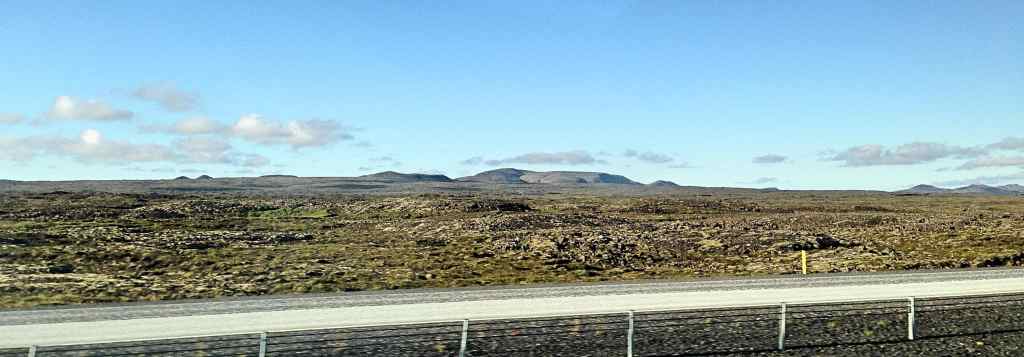
Occasionally, some buildings could be seen in the distance: small prefabricated structures made of steel and fiberglass. I did not know what I expected to find in Iceland, but I did not expect to find such total emptiness and precariousness. Every bit of human life seemed as if it had been eked out in a hostile environment. And, indeed, Iceland is hostile: at such a high latitude, Iceland’s climate is nearly arctic. Even in the middle of July, I needed extra layers to be comfortable (which I had hastily bought at a second-hand store before my trip). Simply looking out the window during this short bus ride opened my eyes to the reality of life in this place. It is a land of a few, hardy people, willing to deal with surroundings that are not especially conducive to comfortable life.
Finally the bus arrived at the station. I put away my extra bags and left to explore the nation’s capital. Once again, I was surprised at how humble and sparse everything was. The bus station itself is little more than a shed, and it stands right next to a neighborhood of residential houses. Even these buildings had the quality of bomb shelters, with thick concrete walls and small windows. I suppose it is difficult to build on permafrost.
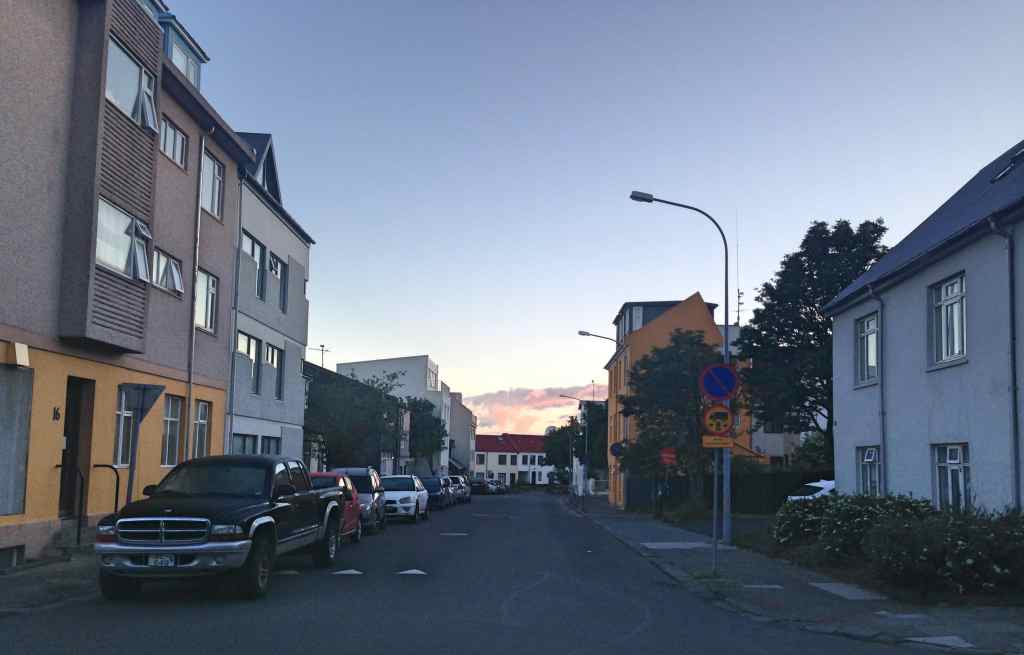
Very soon I was standing in front of one of the most famous buildings in the country: the Hallgrímskirkja, a monumental church. I will discuss this church more later (since I experienced more of it during my second visit), but I do want to highlight here that this church is one of the tallest structures in the entire country. Certainly, it is not a miniscule building, but in any other context it would be medium-sized at best. Even provincial churches in Spain are taller—and that is putting aside apartment buildings. Once again, the permafrost creates real limitations.

I did not have much time—only about two hours—so I could not stop to do anything. Besides, it was around five in the morning by this point, so nothing was open. I just wanted to walk as far as I could; and the experience was surreal. Since the jet lag and the sunlight had totally thrown off my own biological clock, I had little sense that it was the middle of the night. So it was shocking to see the many young people still crowding into bars, throwing up into the bushes, or pissing on the sidewalks. Typically, such scenes are mercifully shrouded by the darkness of night. In the twilight, however, it was rather disturbing to see—especially since I was quite painfully sober.
After making my way through the nightlife sections of town, I reached the seaside. Here I got a glimpse of the beauty of the Icelandic landscape. The sky was streaked with low-lying clouds, shining bright yellow from the low-lying sun. Ships sat idle and empty at the docks—coast guard vessels, fishing boats, pleasure barques—their dusky reflections an indistinct shadow in the shady light. I kept going and going, trying to get as far as I could in the peninsula before I ran out of time. This led me to Seltjarnarnes, the township at the very end of the landform. Further on, I could see the distinct, cubic form of the Saltjarnarneskirkja, another architecturally daring church.
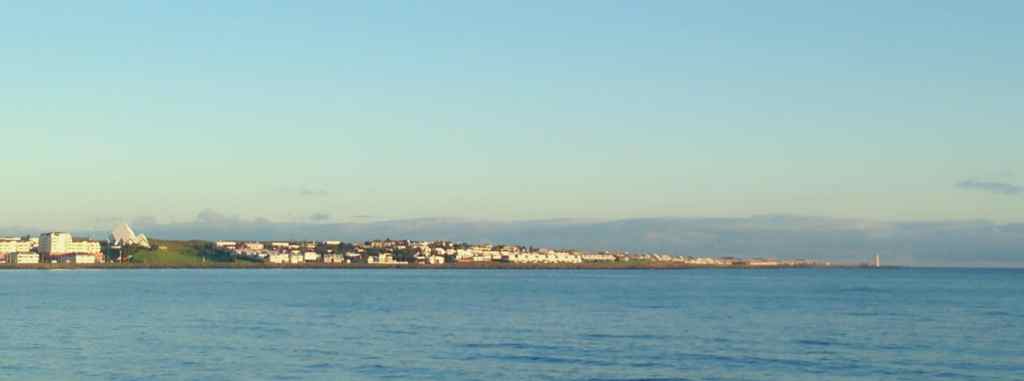
I had hoped to get all the way to the Grótta Island Lighthouse, which stands at the extreme end of the land. But, alas, I ran out of time before I could make it. I had to turn back. But I took a few minutes to sit by the sea and gaze into the ocean. The circumstances—the brisk morning air and the unnerving dawn light, combined with my jetlag and exhaustion—produced a strange and memorable feeling: as if I had reached the end of the world, and was gazing into an unknown beyond. This was easily the most north that I had ever travelled, and for all I knew it was the most north I would ever travel in my life. For a moment, I felt the thrill of adventure and, that most wonderful of travel sensations, the endless wonder of the world.
This did not last long, however, as I had to rush back to the bus station if I wanted to make it to New York. Soon, I was once again being driven through the strange volcanic landscape, was making my way through airport security, and was flying thousands of feet through the air. I was seated next to a nice family from Argentina, and chatted with them a bit in Spanish. Out the window, I could see an endless landscape of mountains, rock, and ice: Greenland. It was magnificent, in the way that only nature can be. And I hoped that, someday, I would have the time and the means to experience more of this extraordinary part of the earth.
Stopover 2: July 2018
A year had gone by, and I was not much the wiser for it. But at least I knew that, if I was going to stop in Iceland again, I should at least give myself a little more time to explore. Thus, I gave myself upwards of 10 hours during this second stopover: enough to at least visit a couple things and have a bite to eat. Plus, not all of it would be in the middle of the night.
But some of it would be. My flight arrived at around four in the morning, and of course I was exhausted. Once again, the sun was not quite fully up nor fully set; but this particular night was cloudy, and so it was fairly dark outside. Since nothing in the city would be open yet, I decided to spend some time trying to get a little sleep. So I lay down on one of the benches near my arrival gate and closed my eyes. The sleep was not forthcoming. Though the place was mostly quiet, the lights were blaring brightly, and placing my hoodie over my eyes did not help much. What is more, every ten minutes or so another plane would arrive, flooding the hall with passengers. This did not make for restful sleep.
One way or another, though, the time passed. By around eight, I decided that it was time to go to Reykjavik. The process of arriving was exactly the same as the year before: a coach bus to the city’s bus station. After about an hour, my luggage was stored away in luggage lockers, and I was retracing my steps.
This led me, very soon, to the Hallgrímskirkja (“the church of Hallgrímur”). And now I finally had some time to stop and visit it. From the outside, the church is quite unlike the typical European architecture. It features a central tower flanked by a series of steps which ascend, logarithmically, to the highest point. This gives the building a wonderful energy, as if the entire structure is being swept up towards the sky. Incidentally, this design also helps to accentuate the building’s verticality, helping it to appear taller than it really is (74.5 m, or 244 feet).
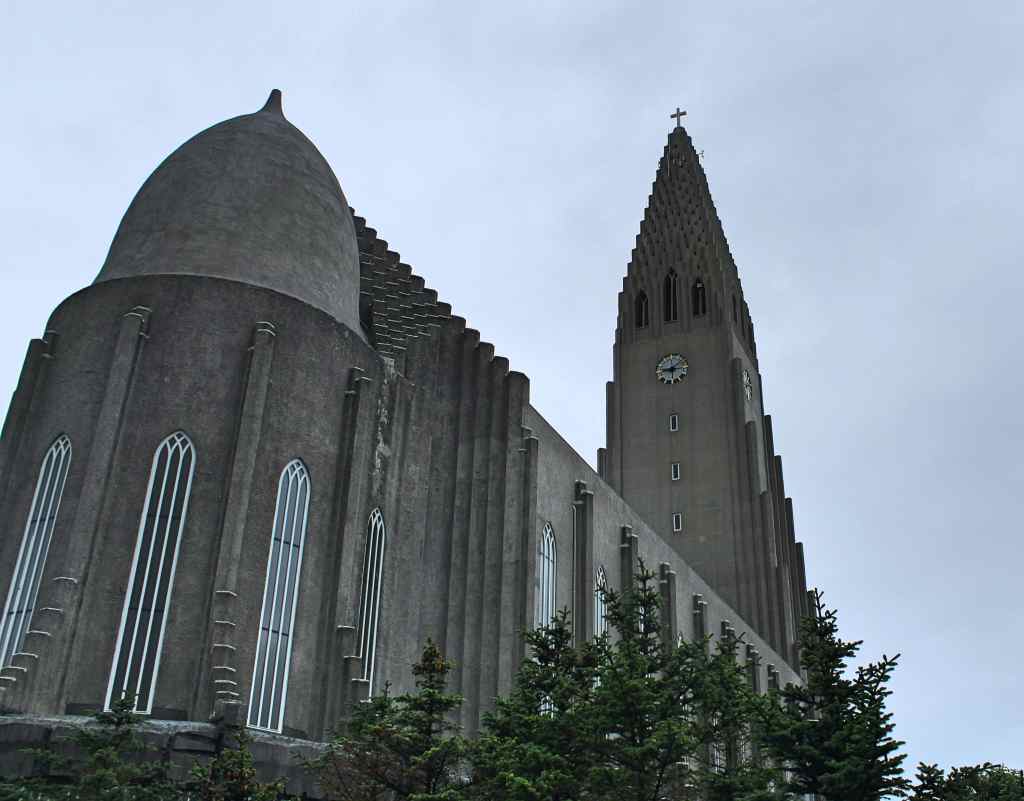
In front of the cathedral stands a statue of Leif Erikson, perhaps the most famous Icelander in history: the first European to set foot on the American continent. This statue actually predates the church, as it was given as a gift to Iceland from the United States. It was designed by Alexander Stirling Calder (who also designed the statue of Washington in NYC’s Washington Square), and is quite a heroic piece of work.
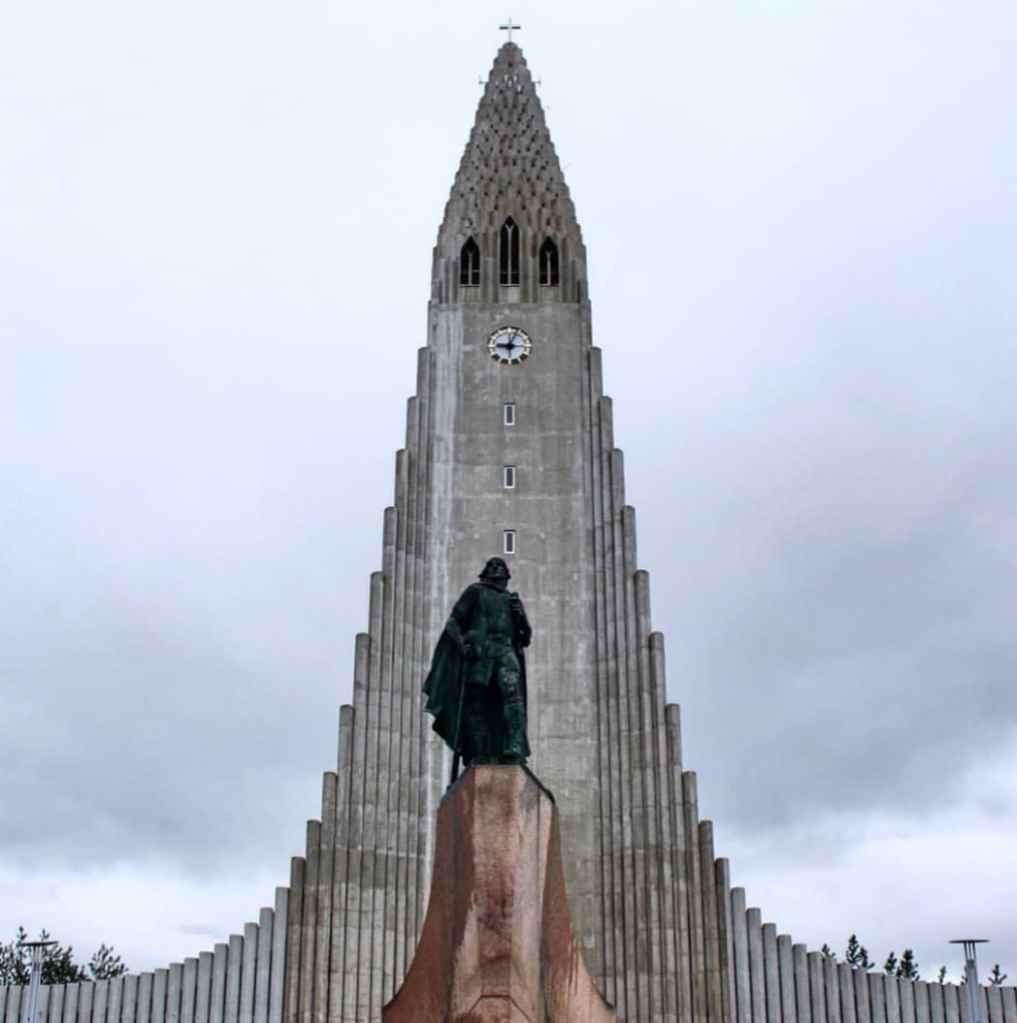
One can get some idea of the engineering challenges presented by Iceland’s climate when one learns that this church—which, again, would not be considered particularly big in another European context—took forty years to complete: from 1945 to 1986. In fact, the original plan for this church did not call for it to be so large; but the dimensions were enlarged in order to outshine the country’s Catholic cathedral (located not far off). This church, by the way, belongs to Iceland’s national denomination, which is based on Lutheranism. The inside of the building is quite as geometrically daring as the outside: an unadorned assemblage of gothic vaults and arches.
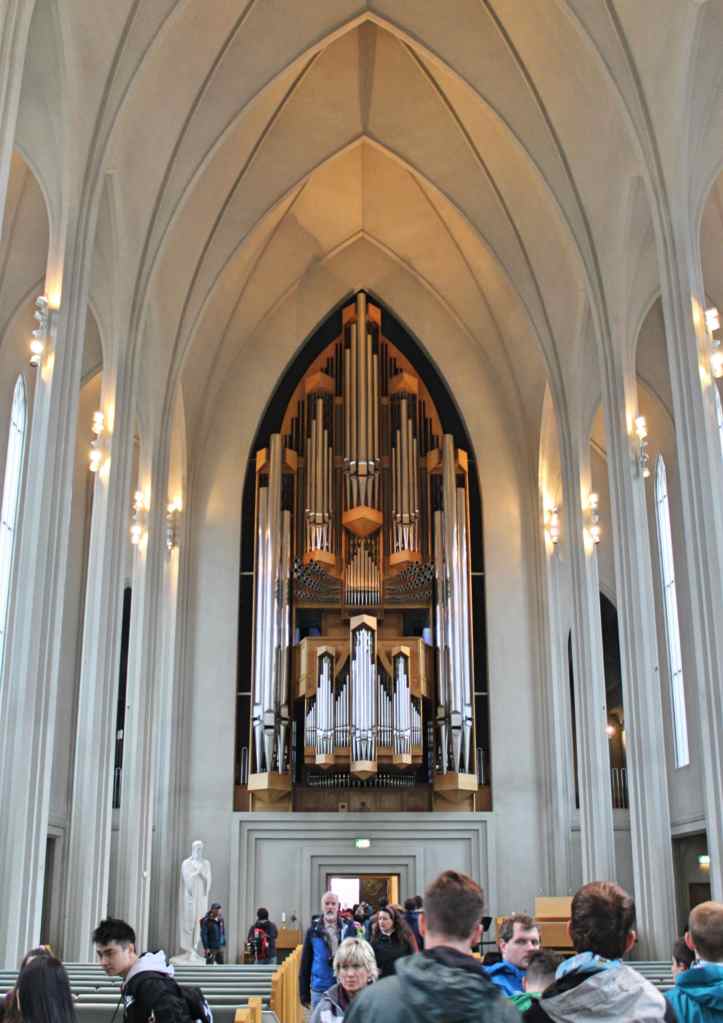
Next I made my way to the city center—which was very familiar, even though I had seen it only briefly a year ago—and then onwards to the shore. There, I paused to admire the daring form of the Harpa Concert Hall, a modern performance space consisting of glass over a steel frame. Both the windows and the underlying structure were created using various geometrical forms, which make the surface of the building fascinating to see, especially as the variously angled windows catch the shimmering morning light. The Iceland Symphony Orchestra most commonly performs here, and I am sure it is quite a good show.



By now it was still early morning, but I was famished. So I decided to visit one of the most popular cheap restaurants in the city, Icelandic Street Food. When I visited, this establishment had just recently opened, and yet it already was the top-rated cheap restaurant in the city. As soon as I arrived, I could see why they had had such success. The entire staff—an international collection of young men, from Iceland, and Eastern and Northern Europe—were extremely friendly and went far out of their way to create a pleasant atmosphere. Also, their menu was tailor-made to engender satisfaction. They sold soups—two types: lamb and fish. If you paid a little extra, your soup came in a bread bowl. But whatever you got came with unlimited refills. Soon I found myself downing my third bowl of soup, as I chatted with the friendly Polish waiter.

Best of all, my soup came with a free coupon for a beer at the bar next door (which had the same owner). So even though the meal was not exactly cheap by my usual standards, I got quite a lot for my money. And, best of all, it was good.
Now my time in Iceland was running out. I could only visit one of the city’s attractions. There were many options. The Perlan is an impressive exhibition center, built in a former hot-water heater on a hill somewhat outside the city center. But I did not have time to walk so far. The National Museum of Iceland was an intriguing choice, filled with artifacts from the country’s Viking past. And of course there was the famous Iceland Phallological Museum, an exhibition dedicated to the phalluses of the animal kingdom. That was certainly tempting. (By the way, I highly recommend reading the museum’s Wikipedia entry.) But I eventually decided on a new attraction: Tales from Iceland.
To be honest, I did not know what to expect when I paid and walked inside. But I was immediately delighted to find that my ticket came with free coffee and cookies. Iceland was certainly making a good impression this time around. Soon I discovered that Tales from Iceland is an audiovisual exhibit, consisting of dozens of screens and chairs, all set on a standard timer. This way, all the videos end at about the same time, and you have a minute to move on to the next video station. I thought it a very neat idea.
I have to admit, however, that I mostly did not care for the videos on the first floor. These mainly consisted of over-produced, romanticized travelogues by tourists to Iceland, with cheesy commentary about how travel broadens our horizons and deepens our feelings and so forth. But I am sure my girlfriend would have loved it, since traveling around Iceland is one of her dreams. Certainly, judging from these videos, the country is quite beautiful. There are endless fields, cliffs, valleys, rocks, and rivers—not to mention the glaciers and volcanoes—with a few hardy Icelanders living in cozy houses scattered throughout this barren environment. The tourists seemed always to be on an adventure: driving down a dirt road, walking under a waterfall, riding an exotic horse, or camping under the northern lights. Maybe I can go on my honeymoon.
The upstairs was considerably more to my tastes. Here, the videos gave little overviews of many different aspects of this little island nation. I learned a lot in a short time, and much of it surprised me. The most important thing to keep in mind about Iceland is that there are really not many Icelanders. Indeed, there are more sheep than people living in the country: with over 800,000 of the former, and just about 320,000 of the latter. In other words, there are more people living in my county in New York (Westchester)—about three times more, in fact. Considering this, virtually every accomplishment in Iceland seems nearly miraculous.
Consider the book industry, for example. Iceland had a robust and vibrant literary output—novels, nonfiction, journalism—and even a Nobel Laureate, Halldór Laxness. Of course, this is true of nearly every major country; but in a country the size of Iceland, this means that an absurdly high portion of the population must publish a book. In fact, 1 in 10 Icelanders will publish a book in their lifetime—a higher portion than anywhere else in the world. (Icelandic, by the way, is a Nordic language, like Swedish or Danish; but it is distinct for being the most closely related to Old Norse, which allows Icelanders to read the medieval Eddas and sagas in the original.)
The figures on authorship are impressive enough. But consider Iceland’s football team. Somehow, in a country the size of a medium-sized city, they have assembled a team which can compete with and even defeat countries like England (whose population is about 200 times bigger) in the World Cup. Iceland has also had great success in entertainment. A surprising number of successful musicians have come out of Iceland—including, most famously, Björk. (Here’s a charming video of her.)
And all this is not to mention Iceland’s impressive economic success. For most of its existence, Iceland had been primarily a fishing nation. In fact, the closest the thing the country has had to a war were the so-called “Cod Wars”—conflicts over fishing territories waged against the UK. In the wake of the Second World War, however, Iceland emerged as one of the most developed countries in the West, with a standard of living well above many European nations (as well as above the United States). You can get a feel for Iceland’s success by, say, paying for a cup of coffee. It is not a cheap place.
Apart from being culturally exceptional, Iceland is also geologically extreme. Besides its high latitude and cold climate, Iceland is distinct for the very high level of volcanic activity. The entire island was formed from an upsurge of igneous rock from the ocean floor. Volcanic eruptions are not uncommon events in the island, and are occasionally disruptive. As recently as 2010, a volcanic eruption in the south of the country grounded flights in the UK.
Curiously, it is not quite known why Iceland should have so many active volcanoes. Partly this is due to the country’s location between two continental plates; but still there must be other factors at work. The volcanism has certainly been good for tourism, however, powering attractions such as the Blue Lagoon, a famous geothermal spa. In fact, many houses in the country get their heating entirely from the earth.
I finished the museum, and now it was time to go. On my way back, I passed by the Tjörnin, or the little lake in the center of the city. It is a picturesque spot, with the profiles of the buildings reflected in the placid waters, and lots of birds feeding on the plentiful breadcrumbs made available by the residents. There, I snapped a final picture before returning to the station, boarding the bus, and then flying back to New York. It was a wonderful layover; and I suspect it will not be the last time that I set foot in Iceland.
